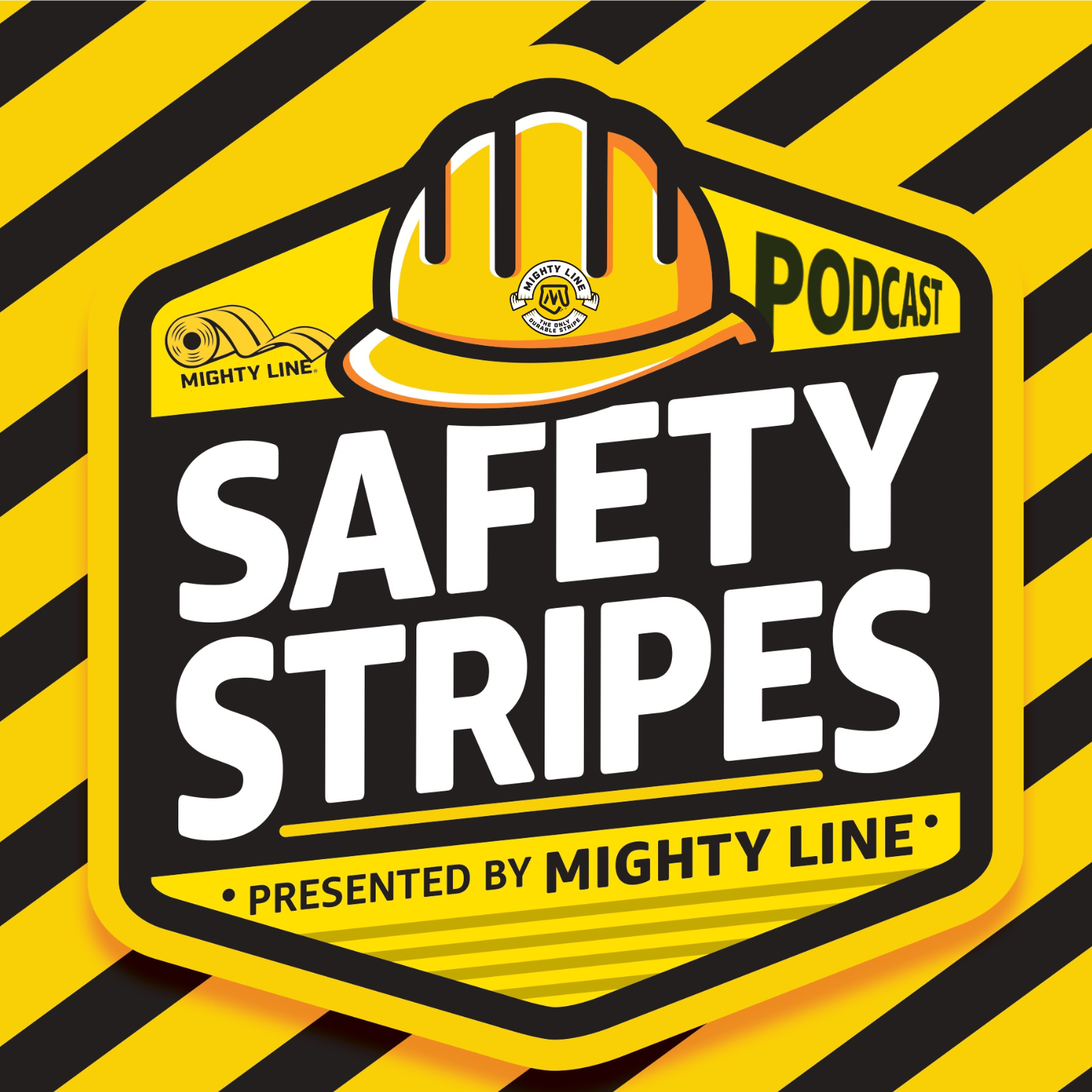
Warehouse Safety Tips by Wes Wyatt and Mighty Line Floor Tape - The Best Workplace Safety podcast talking Warehouse Safety Tips!
Warehouse Safety Tips by Mighty Line is a podcast series produced by Wes Wyatt.
Podcasts will be weekly and highlight general industrial and workplace safety topics. View the blogs, videos and articles at https://mightylinetape.com/ Vodcasts, and videos of the podcasts can be viewed at https://vimeo.com/mightylinefloortape.
Get Free Samples of Mighty Line Floor Tape (https://mightylinetape.com/pages/product-request-form)
Learn about Mighty Line Floor Tape and Mighty Line Floor Signage (https://mightylinetape.com/pages/about-us-floor-tape)
View all our podcasts at https://mightylinetape.com/pages/safetytips
Safe operations are critical to every industry. It is essential that all employers maintain safe workplaces, and that all employees and visitors engage in behaviors that assure that all will return home safely. The Safety Stripes podcast will discuss important warehouse, industrial and commercial safety topics that management, safety managers and others with safety responsibilities can use to be more effective in protecting both employees and their operations. Wednesday Warehouse Safety Tips will do just that – provide everyday operational tips, tools and strategies that enable employees, supervisors, and managers to put safety into action in order to reduce workplace risk.Our goal is to improve health, safety and operational excellence at all worksites.
Safety Stripes Podcast topics include or may include:
General Workplace |Safety | Safety Training Programs| Hazard Identification | Personal Protective Equipment (PPE) | Occupational Safety and Health Administration |OSHA Compliance Guidelines |Six Sigma - 5s Methodology |OSHA Inspection Tips |NFPA (National Fire Protection Association) |Fire Safety Standards | NFPA Codes and Standards |EHS (Environment, Health, and Safety) | Environmental Compliance |Workplace Health Programs |Safety and Health Management Systems |Forklift Safety |Forklift Operation Training | Forklift Maintenance and Inspection |Forklift Accident Prevention | Racking Systems |Warehouse Racking Solutions |Pallet Rack Safety Standards | Racking Inspection and Maintenance|
You can learn more about our warehouse safety tips and watch videos and read articles (https://mightylinetape.com/a/blog/category/mighty-lines-safety-talk-and-toolbox-talk-topics)
This podcast is provided by Mighty Line floor tape (https://mightylinetape.com/collections/industrial-safety-floor-tape-solid) and Mighty Line floor signs (https://mightylinetape.com/collections/mighty-line-standard-floor-signs) - learn more at www.MightyLineTape.com (https://mightylinetape.com/)
Warehouse Safety Tips by Wes Wyatt and Mighty Line Floor Tape - The Best Workplace Safety podcast talking Warehouse Safety Tips!
Warehouse Safety Tips | Episode 284 | Hazard Communication & Chemical Safety: GHS Labels and Pictograms
https://jo.my/ks9dzt
Hazard Communication & Chemical Safety: GHS Labels and Pictograms
Understanding how to correctly label chemicals and identify hazards is critical for keeping everyone in the facility safe. Week 3 of our Hazard Communication & Chemical Safety series focuses on labeling and pictograms, essential components of the Globally Harmonized System (GHS).
A strong Safety Culture includes consistent, clear labeling and hazard recognition. It also relies on employees identifying the risks involved with each chemical or substance they handle.
GHS labels are designed to communicate specific hazards quickly. They use standardized pictograms, signal words, hazard statements, and precautionary guidance. These labels are required on all primary containers and must stay intact and legible. Unfortunately, many accidents happen because labels are missing, unreadable, or incorrect. That's why clear and accurate labeling practices are key to chemical safety.
Here are a few tips to assist you with proper labeling and understanding pictograms:
- Know the nine GHS pictograms. Each symbol represents a specific hazard. From the flame icon indicating flammable materials to the skull and crossbones for toxic substances, recognizing these symbols at a glance helps prevent unsafe exposure and improper handling.
- Always check for the six required elements on a GHS label. These include the product identifier, signal word, pictogram(s), hazard statement, precautionary statement, and supplier information. If any of these are missing, the label does not meet safety standards and should be reported.
- Label all secondary containers. If you transfer a chemical into a smaller or temporary container, it must also be labeled unless the person who moved it uses it immediately. That label should still include the product name and appropriate hazard information.
- Don't forget to ignore worn or damaged labels. Faded or peeling labels reduce the chance of proper identification. Replace them right away and report the issue to your supervisor.
- Use real-world examples to stay alert. Watch out for common mistakes, like handwritten labels missing hazard information or using abbreviations others may not understand. Ask or refer to the safety data sheet (SDS) when in doubt.
Strong labeling practices don't just meet regulation requirements—they prevent injuries, reduce confusion, and help create a more organized and efficient facility. By taking time to review and understand labels and pictograms, you're actively helping to protect yourself and your team.
Accurate labeling is not a suggestion. It's part of your responsibility to maintain a safe working environment. Let's make sure every label tells the whole story—and tells it.
Thank you for being part of another episode of Warehouse Safety Tips.
Until we meet next time – have a great week, and STAY SAFE!
#Safety #SafetyFIRST #SafetyALWAYS #StaySafe #SafetyCulture #ChemicalSafety #GHSCompliance #HazardCommunication #LabelingMatters
Podcasts we love
Check out these other fine podcasts recommended by us, not an algorithm.

Safety Stripes by Mighty Line Floor Tape - The Best Workplace Safety podcast talking NFPA, EHS & Warehouse Safety Tips!
Wes Wyatt, Mighty Line Floor Tape
The Safety Pro Podcast
Blaine J. Hoffmann, MS OHSM
Stripe It Like It's Hot
Cam Roberts
The New Warehouse Podcast
Kevin Lawton
